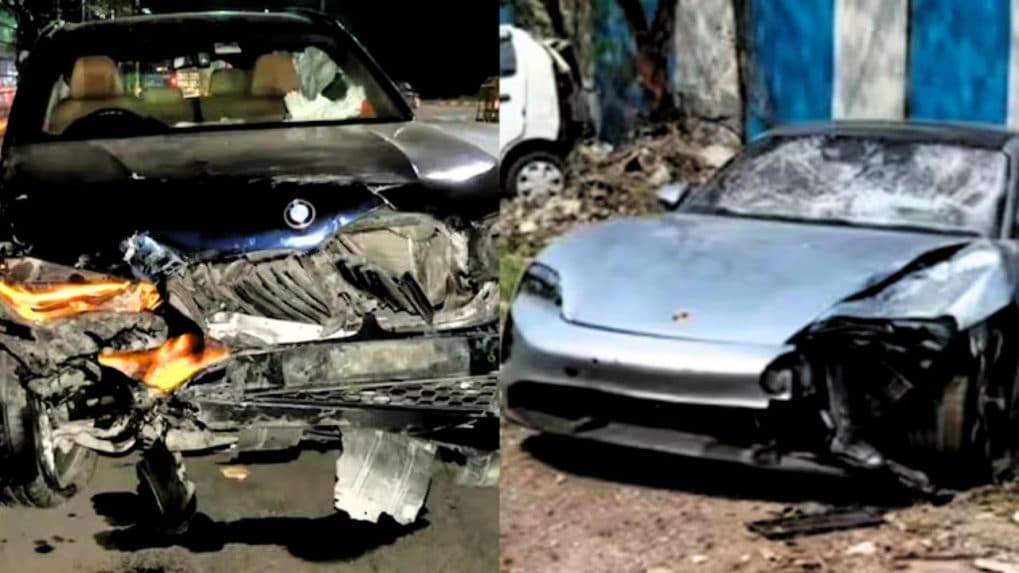Digital
Why OpenAI is hiring 100 ex-bankers: Inside the ChatGPT-maker's secret project to automate Wall Street's grunt work

When a Maruti Swift or Hyundai crashes, the news is about “a car accident.” But when it’s a BMW, Audi, Porsche, or even a Mahindra Thar, the brand becomes the headline. “BMW kills two,” “Porsche rams into bikers,” or “Thar mows down pedestrian” are all-too-familiar tropes in India’s news cyles and Whatsapp forwards. The result: premium carmakers - who spend millions to build equity around safety, luxury, and innovation - often find themselves wrongfully associated with recklessness.
Read more: Virality Over Value? Is India’s iconic brand-building playbook at risk in age of influencers
This unequal treatment, experts argue, is not just a matter of media choice but a reflection of deep-seated stereotypes and social envy - one that unfairly tarnishes premium auto brands and their customers.
Brand expert Harish Bijoor, Founder of Harish Bijoor Consults, calls it a case of “brand envy.”
“Society tends to see premium car owners as big, bad, and spoilt. The accident doesn’t matter if it’s caused by a Tata Nano or a BMW - the perception is that a rich man’s toy has turned dangerous. The truth is, machines are inanimate. People make mistakes, not cars.”
"The brand suffers, even though it’s the driver who made the mistake.”
This narrative is not new.
The infamous “BMW case” of 1999, in which Sanjeev Nanda was accused of mowing down six people in Delhi, was remembered more for the car than the man behind the wheel. More recently, Mahindra’s Thar - positioned as an adventure SUV - has come to be caricatured as the choice of rash, show-off drivers.
Perception vs. reality
Arjun Singh Chauhan, AVP and Head of Marketing & Growth at Apollo 24/7, points out that premium automakers invest years and millions in building their image, only to see it eroded by negative headlines.
“No buyer wants to be linked to irresponsibility just because of what they drive,” he says. “In India, sensational coverage has turned cars like the Thar into symbols of hooliganism, unlike in the West, where Jeep is celebrated as aspirational.”
The perception of recklessness also impacts buyers directly.
As Smita Khanna, COO of Newton Consulting India, explains: “Premium cars are symbols of success in India. Linking them with rashness can alienate potential customers and dilute decades of brand equity built around safety and performance.”
The social media multiplier
Anup Sharma, PR and Strategic Communications Advisor, warns that jokes and reels stereotyping luxury car owners as arrogant or reckless make the perception harder to reverse. “The danger is that a brand’s story of aspiration and engineering gets hijacked by the behavior of a few,” he says. “Reputation is like glass- it takes years to shape and seconds to shatter.”
The instinctive response for automakers might be to push back against brand-blaming. But experts say that can backfire.
“If brands loudly protest, it risks looking like a cover-up,” says Sharma. Instead, they recommend a subtler, more proactive approach - campaigning on road safety, sparking the right conversations in the media, partnering with authorities and highlighting in-built safety features.
Premium carmakers globally have done this effectively.
Volvo’s “A Million More” campaign spotlighted seatbelt safety. BMW has run anti-texting campaigns. Audi India’s recent “Drive Sure” program trains owners and chauffeurs in responsible driving.
Khanna believes technology could also help shift the narrative. “Mandatory dashcams and driving behavior tools can provide irrefutable evidence of fault,” she says. “That way, the conversation moves from blame to accountability.”
Ultimately, experts agree the narrative must move away from brand names to where it truly belongs — driver responsibility, infrastructure gaps and road safety culture.
Or as Bijoor puts it: “Don’t blame the machine. Blame the man or woman behind the wheel.”
From purpose-driven work and narrative-rich brand films to AI-enabled ideas and creator-led collaborations, the awards reflect the full spectrum of modern creativity.
Read MoreIn a wide-ranging interview with Storyboard18, Sorrell delivers his frankest assessment yet of how the deal will redefine creativity, media, and talent across markets.